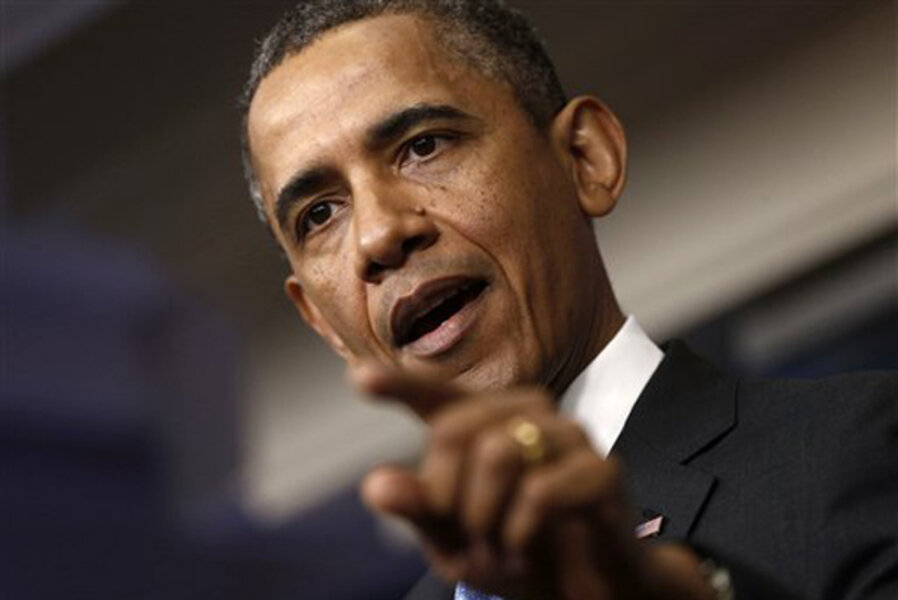'Obamacare' starts soon: Choices will increase, but will premiums?
Loading...
| WASHINGTON
Insurance companies are showing interest in providing coverage under "Obamacare," a development likely to increase market competition and give uninsured people more choices than they now have, the White House said Thursday. Many of the 14 million people who currently buy their own insurance plans could also benefit.
Eager to counter Republican criticism of the law, the White House's upbeat assessment of the effect of the law comes four months before consumers can begin shopping for subsidized private insurance in new state markets. Widespread enrollment in those plans is crucial to the successful implementation of President Barack Obama's 2010 Affordable Care Act, widely known as "Obamacare."
On its website, the White House posted a memo that concluded that most of the consumers who seek insurance from federal- or state-run insurance markets will be able to choose from five or more different insurance companies. The finding is based on data provided by 19 states where the federal government will run the markets and from other state-run markets. Those states account for about 80 percent of the 7 million people that the Congressional Budget Office estimates will obtain insurance through the new markets in 2014.
Currently the insurance market in most states is dominated by one or two insurance carriers; in 45 states and the District of Columbia two insurers cover more than half of all enrollees.
The administration's findings about increased competition generally match up with private sector assessments of early indicators. The market research firm Avalere Health found strong insurer interest in participating in about a dozen states that have released details of their new insurance markets.
Whether the competition will result in lower premiums, however, remains an open question.
Administration officials point to a report by the Democratic staff of the House Energy and Commerce Committee last week that determined that in Oregon and Washington the competition is lowering premium rates even before income-based tax credits are taken into account. But two other states whose filings were examined by the committee, Rhode Island and Maryland, signaled premium rate increases.
An earlier report by the committee's Republican staff surveyed insurers who estimated that premiums would increase in most cases.
Indeed, concerns remain that people who already have insurance coverage, especially the young and healthy, could face an increase in premiums because of the new law's demands. The plans that will be offered next year are more comprehensive than many bare-bones policies currently available to individuals.
They have to cover a standard set of benefits, including prescription drugs, maternity care, and rehabilitation services. Insurers are also limited in what they can charge older customers, and they are not allowed to turn away sick people or charge them more. The most important cost feature is that the new plans limit copayments and other out-of-pocket costs to $6,400 a year for individuals and $12,500 for families.
A new report by Center Forward, a centrist research group that has its roots with the moderate Blue Dog wing of the Democratic Party, concluded that differences in current state regulations will determine the effect on premiums. Of six states it examined, the report determined that five would see sharp premium increases of up to 50 or 60 percent. One state, New Jersey, could see a drop in premiums of up to 25 percent.
Meanwhile Congress' watchdog, the Government Accountability Office, examined the preparations in six states and the District of Columbia and concluded that despite challenges the seven governments have taken steps to create their insurance marketplaces, or exchanges, that they expect will be ready to begin enrolling customers by the Oct 1 startup date.
The GAO, in the report released Thursday, said six of the seven governments also described difficulties with the complexity of the information technology systems they need to put in place to assist consumers in making their insurance choices.
The governments were picked on the basis of their varying uninsured populations, among other criteria. In addition to the District of Columbia, the GAO looked at preparations underway in Minnesota, Nevada, New York, Oregon, Rhode Island and Iowa.
People without access to coverage through their jobs can start shopping on Oct. 1 for subsidized private insurance in new state markets. The actual benefits begin Jan. 1. But because of continuing opposition to the law from many Republican governors and state legislators, the federal government will be running the insurance markets in more than half the states.
Associated Press writer Ricardo Alonso-Zaldivar contributed to this report.





